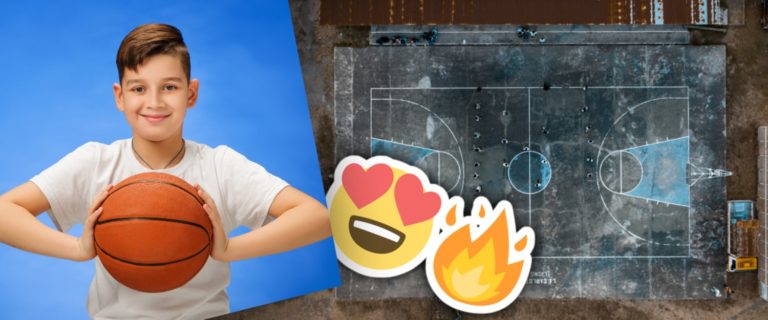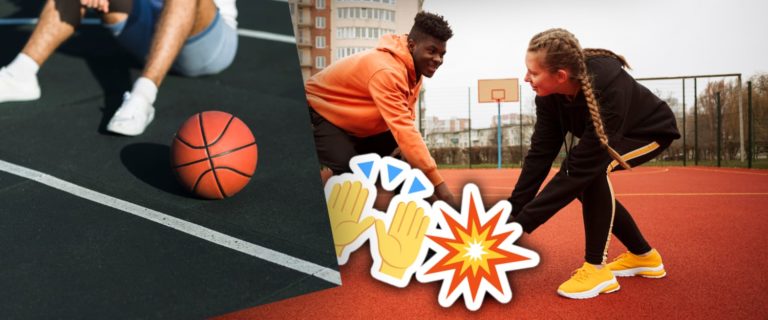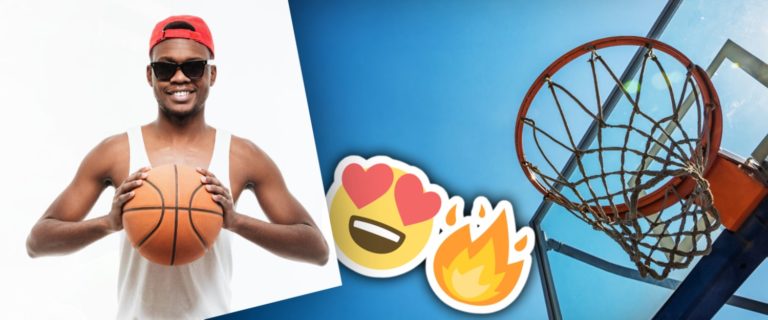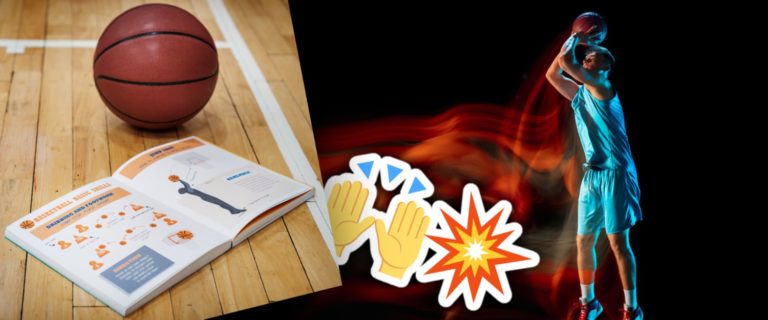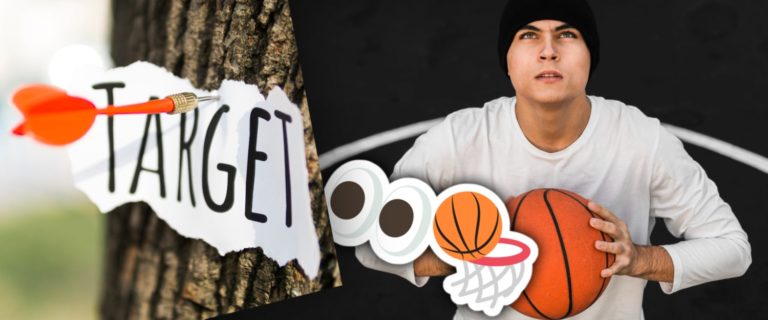Layups In Basketball: Instruction Guide
Layups in basketball are one of the most common shots. It can be done by almost every player, and it’s a great way to score points. But how do you do it? This blog post will show you what a layup is. How to perform one properly, and give some tips on improving your game!
What is a Layup in Basketball?
Layups in basketball is a shot where the player jumps and puts the ball in the basket with one hand while being very close to the basket. Layups are typically performed when you are close to or underneath your hoop since they are simple to make from that distance (unlike other shots like three points) and they increase your chances of scoring points. One of the basketball shots with the highest percentage is the layup, particularly when done correctly.
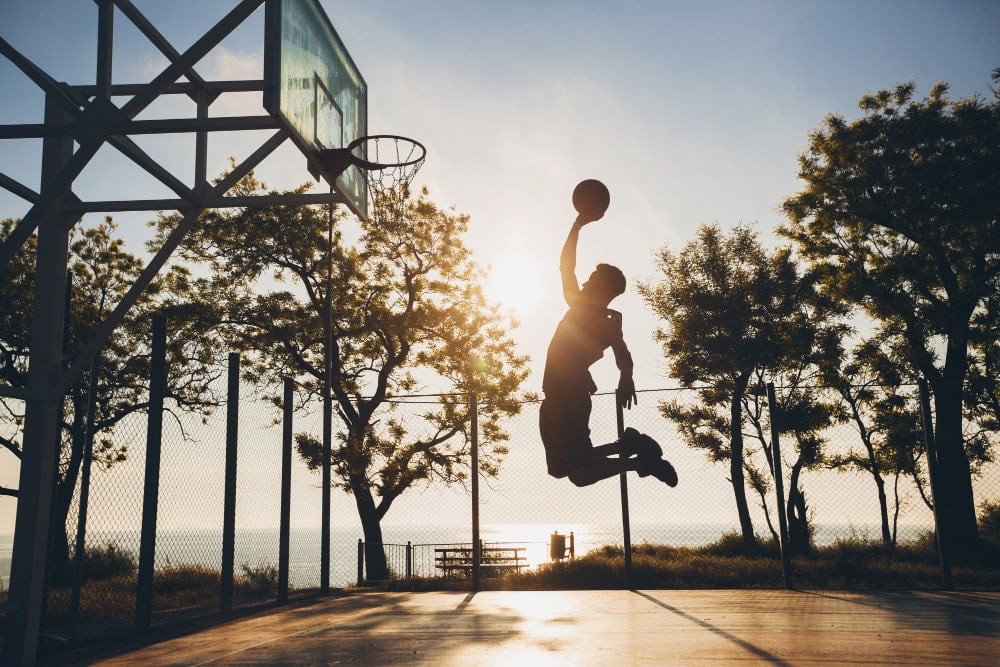
What Type of Skill is a Layup?
A layup is an All-Around skill. This means that it’s something you can practice all the time, and use in almost any game situation!
The technique of a layup should be very similar regardless of what position you are playing (PG, SG) or even who you’re playing against (a tall defender like Shaq will make this shot more difficult than if you were playing someone smaller). The only thing that changes depending on who is defending the basket is how to set up your body for taking off; but once again, we’ll cover that later.
Every player practices all-around abilities every day during warm-ups and cool-downs because they develop the muscles needed for a variety of shots.
This means that the layup will be one of your best shots later on. Whether you are playing pick-up or in an official game!
Tips and Fundamentals on Layups
- First, get inside the defender’s reach.
- Get a running start before you perform your layup so that you have more power to complete it. If possible, try getting past your opponent first for an easier shot!
- Keep track of where the defense is at all times. This will help if they are trying to block your layup attempt.
- Make sure to keep your other hand up. In case you miss the shot (you will still be able to defend yourself).
- As you get closer to the hoop, be sure to keep your head up and your eyes on the ball.
- Get a good grip of the basketball by making sure your fingers are spread apart (not pinched) or using two hands for better control of where the shot is going.
- Keep your shooting elbow in contact with the outside of your knee. This will help you adjust to any changes that may happen during a game (for example, if it’s raining and makes the ball wet).
- When doing an inside-out layup, try using different speeds to create more difficult shots for defenders. A slow layup is easier to block than one which has quick speed!
- The key point when finishing a layup is follow-through. Make sure you are holding onto the ball until after it goes into the net so that no defender can knock it away!
How to Practice Layups?
One of the easiest shots in basketball is the layup. All it takes to make them perfect is a lot of practice and commitment! Keep in mind what we discussed earlier: proper form is essential when performing these exercises! Keep your attention fixed on the rim and execute all movements swiftly and fluidly to avoid being obstructed.
It’s best to practice with a defender, just like with any other shot. They won’t be able to block the ball if you let them know you’re going for layups. Last but not least, we advise practicing layups with your weak hand. By doing this, you’ll make the move unpredictable for your opponents!
The Inside Out Layup
The inside-out layup is a great shooting technique to use against defenders because it’s not easy for them to block. Just like the name explains, you’re gonna need some space before making this move. So get off of your toes and take one step back with your left foot (if you’re right-handed).
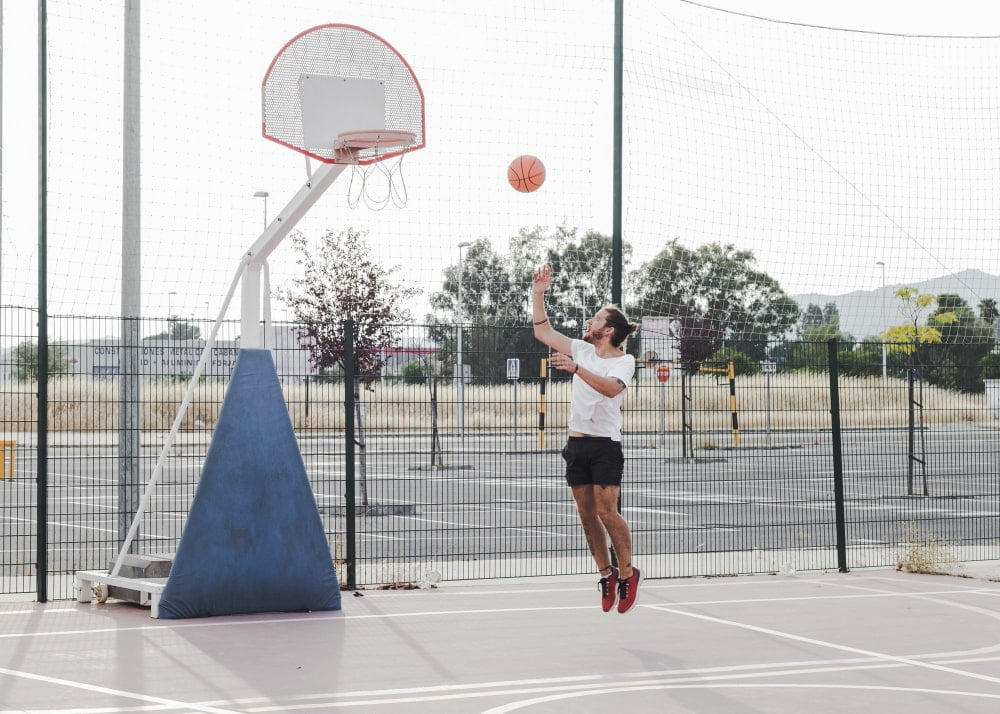
Which Hand to Use
Now that we’ve got our feet in position, let’s grab the ball! You can use either hand but most players prefer their dominant hand which is usually their right hand if they are right-handed or vice versa. If you don’t already know which one of those two hands is yours just try both and see what works better for you!
All About Form
Make sure your fingers aren’t too close together when holding the ball; widen them out a little to ensure you have adequate control over it. Also, to maintain balance, keep your elbows close to your torso and pointing outward.
Takeoff
Now we’re ready for takeoff: jump off of one foot (spread them) and try using one hand on top of the other (left on the right or vice versa). When shooting remember that keeping our elbow away from our head is very important because it allows us to shoot more straight which means less chance of missing your shot!
Releasing the Ball
The ball can be released in two different ways. Either approach feels better is up to you—either way is good! Some athletes choose to shoot with two hands at once or, if they are right-handed or left-handed, just utilize their dominant hand.
The Reverse/Overhead Layup
This layup is great if you’re near the hoop and your defender is way up at the top of the key.

Get in Positon!
First, let’s get our feet in position: we want to be closer to mid-court than under our opponent’s net so take a step or two forward with your right foot (if we’re shooting with our right hand). Finally, make sure that both hands are holding on tightly to the ball! You can also use one hand but it might feel better when using different ones every time.
Takeoff
Now for takeoff – remember what I said about being careful not to jump too high? Well, this applies here because players tend to reach their arms out towards the rim which makes them lose balance, especially since they’ve got another arm holding the ball. Try to jump off of one foot (the same you’ll be shooting with) and keep your arms down so you can land more easily!
Aim for the Box
After takeoff, shoot straight towards the box but always try keeping your elbow away from your face because it will help create a better shot for yourself. Keep in mind that even though this is an easier layup than the first one there are still some pretty good challenges here like not getting blocked or having someone steal/deflect our pass after we’ve made it!
Lift-Off!
The lift-off is very important when making this kind of layup: most players tend to lean forward which makes them lose balance – don’t let gravity pull you down my friend… Let me say that again… Don’t let gravity pull you down!
Other different Types of layups
There are several variations of layups—basketball shots that are good for two points—that an offensive player can utilize in different situations. Learn these variations to work toward becoming a proficient interior scorer against any defensive matchup:
- Dunk: You might not consider a dunk to be a true layup, but this field goal attempt can be a highly effective and physically aggressive finishing move. Review National Basketball Association (NBA) highlights and you will see that a successful dunk can go beyond adding two points to the scoreboard—it can directly influence the morale and flow of a game.
- Euro step layup: Beneficial when you need to quickly alter your angle of attack, a Euro step layup can create space between you and an overly committed defender. You can perform a Euro step from a jump-stop position (when a player comes to a sudden stop with both feet—from this position, either foot can become the pivot foot) or from a moving “gather step.” To perform a gather step, the ball handler dribbles toward the basket and first picks up the ball while planting on an outside foot, then crosses the opposite foot toward a different angle. A gather step is an advanced maneuver, so it might take practice before you can perform one correctly without committing a traveling violation.
- Floater: This layup variation is an essential scoring tool for any guard or undersized player. When attacking taller defenders, you might find it difficult to perform a traditional layup. In these situations, you can carefully push the ball up and above the defender’s reach. Unlike other layup variations, which see the player aiming for the backboard, floaters aim for a soft arch that will have the basketball settle on top of the rim before falling into the hoop.
- Left-handed or right-handed layup: Players should become proficient in scoring from either side of the basket. An efficient scorer practices layups with both the left hand and the right hand, as well as jumping from either foot. At first, it might feel awkward to attempt a left-handed layup if you are right-hand dominant and vice versa. But with practice, ambidextrous ball control can give you more scoring options when you head to the basket.
- Overhand or underhand layup: Since most people are right-handed, an overhand layup from the right side of the hoop is typically the first shot a player learns. To execute this overhand shot, you plant the left foot and gain elevation toward the hoop by raising your right knee. Aim for the corner of the box painted on the backboard to ensure a successful trajectory—the ball should bounce off the backboard and into the hoop. An overhand layup off the backboard can be a well-protected attempt in heavy traffic under the net. On a breakaway layup, a player might prefer the underhand variation, in which they “finger roll” the ball above the rim for an easy bucket.
- Power layup: Players underneath the basket utilize the power layup as a finishing move. A power layup leverages good ball control skills so the offensive player can overcome a particularly tall or strong defensive player to finish the play. You can initiate a power layup from an offensive rebound or an entry pass from the wing area of the court. As the offensive player, you then move toward the basket with a power dribble or drop step before leaping off both feet to get the shot off from as high a position as possible.
- Reverse layup: When attacking the hoop from the baseline or being closely pursued by a defender looking to block your layup, you can utilize the reverse layup. Defenders often predict that an attacking player will attempt a shot from the side of the hoop toward which they are traveling, so you can confuse your opponent by finishing the layup on the opposite side. For example, if you are attacking from the left side, you can begin your ascent toward the hoop from the left. Once in the air, you can feint an attempt on the left side before finishing on the right side of the basket.
The list above are just examples of different kind of layups, you must know how and when to use them properly. If you want to be a great layup finisher by the rim, I suggest you watch the best “under-the-rim” finishers in the NBA. These are the players who don’t have much height or athleticism but still has a great shooting percentage while maneuvering in the paint around taller defenders.
The top three greatest finishers under the rim are arguably Kyrie Irving, Stephen Curry, and Tony Parker. Go take a look at how they perform these layups as you might be able to pickup tips and tricks on how to perform your own as well!
Conclusion
This concludes this guide on layups in basketball. We hope that after reading it you can go outside with some friends and practice these layups in basketball until they become second nature to you! Have fun out there and keep playing basketball!
Got any other tips or layup techniques? Let us know in the comments below!



